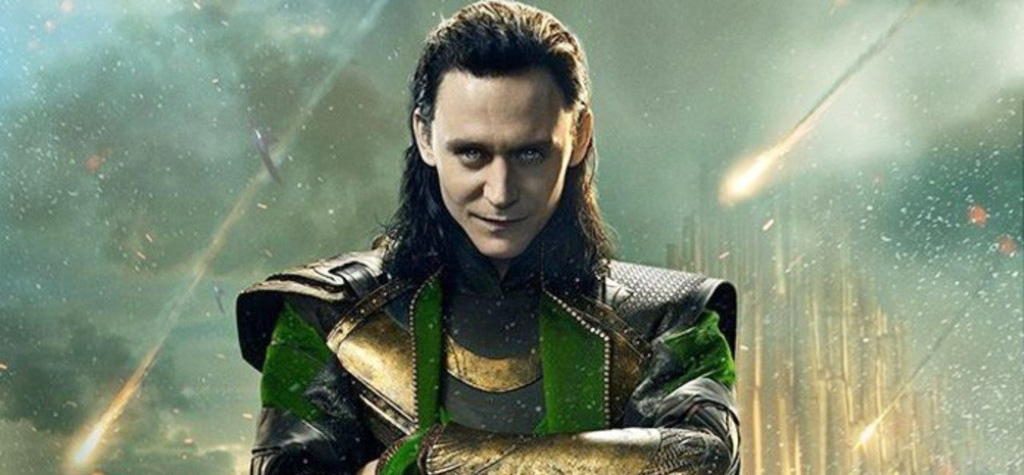When it comes down to which Marvel characters boast the most unusual stories, you gotta admit Loki is pretty dang high on the list. The mischievous Asgardian is an absolute agent of chaos, known for playing various sides, characters, and creatures as he sees fit. Hell, so far the Loki series is all about the God facing the consequences of messing around with the fabric of time. However, for all his antics in the comics and MCU, comic Loki isn’t nearly as troublesome as the Loki found in traditional Norse mythology. Here are five of the Norse Loki’s wildest fun facts.
1. There’s a theory that Loki was originally the Norse God of Fire.
For as much as we talk about all of Loki’s illusions, trickery, mischief, and mayhem, it might surprise some folks to know some scholars believe him to first and foremost be a god of fire. While it’s all speculation, this theory is backed up by the etymology of Loki’s parents’ names. Farbauti, his father’s name, means “fierce strike” and represents lightning. Furthermore, Laufey, his mother’s name, means “leaves.” When lighting strikes leaves, fire is born, and thus this does make some sense. Those who contest the theory state they believe records could be mentioning Logi rather than Loki, who is a giant (or Jötunn) that serves as the personification of fire in Norse mythology.
2. Loki is responsible for the death of one of Norse mythology’s most beloved God, Baldur.
While Loki was already a thorn in nearly every Asgardian side, his work in killing off one of their most beloved Gods — Baldur — certainly earned him outright hatred from the entire Norse pantheon. According to the tale of The Death of Baldur, after hearing Baldur was fated to die, his mother Frigg went to every living creature and made them swear they would never harm her son. However, assuming mistletoe was too small a thing to harm Baldur, she did not acquire its oath. Using this knowledge, Loki armed the blind god Hod with a spear tipped with mistletoe and commanded him to throw it at where Baldur was standing. Hod, unaware of Baldur or the mistletoe’s presence, thus threw it and struck down the son of Frigg and Odin. When Odin visited the goddess Hel to retrieve his son, Hel told him she would return Baldur to the land of the living if every creature on earth shed tears for him. While every creature on earth wept in morning, Loki, disguised as a giantess, refused to cry, thus resigning Baldur to his fate.
3. Loki suffered a pretty grisly punishment for all his insults and bad behavior.
While Loki’s actions don’t have the best of consequences for him in the MCU, they’re nothing compared to what happens to him in Norse mythology. According to a Norse Mythology organization:
For his many crimes against them, the gods eventually forge a chain from the entrails of Loki’s son Narfi and tie him down to three rocks inside a cave. A venomous serpent sits above him, dripping poison onto him. Loki’s apparently very faithful and loving wife, Sigyn, sits at his side with a bowl to catch the venom. But when the bowl becomes full, of course, she has to leave her husband’s side to pour it out. When this happens, the drops of venom that fall onto him cause him to writhe in agony, and these convulsions create earthquakes. And in this state he lies until breaking free at Ragnarok.
4. Loki fathered — and mothered — some pretty interesting children.
On top of Narfi and his entrails, Loki fathered — and mothered! — some other interesting and important children. While goddess of the underworld Hela is Loki’s sister in the MCU, in traditional Norse mythology she is none other than his daughter, Hel. He is also the father of Jormungand, the world serpent, and Fenrir, a monstrously large wolf. Last but certainly not least, Loki turns into a mare, mates with the stallion Svathlifari, and becomes the mother of Sleipnir, an eight-legged horse considered the greatest and fastest in all the realms who is later ridden by Odin.
5. These children are ultimately responsible for unleashing Ragnarok.
So far we’ve covered Loki killing Baldur, being bound, and who his children are, and all of previous these facts come into play in this last one. After Loki’s imprisonment and the binding of his son, Fenrir, the world enters Fimbulvetr, a year-long and brutally cold winter. Following this occurrence, the serpent Jormungand causes monstrous tidal waves, Fenrir breaks his mythic binding, and Loki is freed from his boulders. Ultimately, this starts Ragnarok or the “twilight of the Gods,” an event in which many of the most prominent members of the Norse pantheon are slain and the world sinks into the ocean. Among those killed are Thor, who is poisoned by Loki’s serpent son, and Odin, who is bested by Loki’s wolf son Fenrir.







